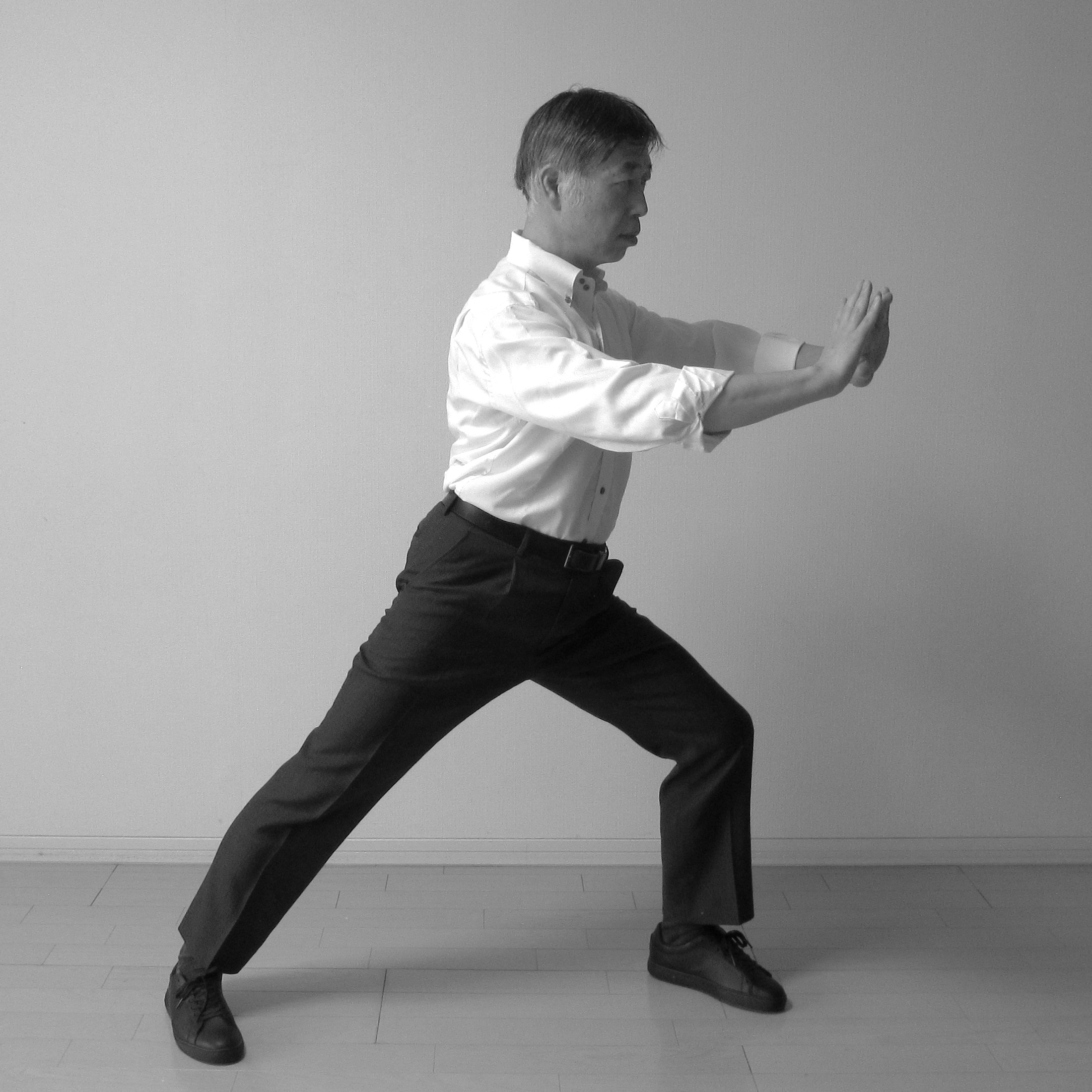
The source of human power is the legs and hips. No one would argue with this.
The legs and hips are connected by two joints.
Only those who control the movement of the hip joints can steps forward on the way to be a master.
The movement of the center of gravity named Dantian in martial arts is operated with both knees with Middle Dantian (sternum) as the fulcrum.
Using both knees in soft and flexible, Lower Dantian is suddenly started to move or stopped moving.
Especially when accelerating the movement of Dantian (Lower Dantian) suddenly, the propulsive force of the front knee is very important.
For this theme, I would like to explain the main points of the finish pose (fixed formula) at the moment when the technique is done effectively.
The finish pose is a state in which the whole body is coordinated, but loss is likely to occur in the transmission of force at the shoulder joints and the hip joints.
How to avoid the loss on the shoulder joint was learned from the beginning of training school to drop the shoulder, so nowadays I couldn’t see anything terrible in the world of martial arts.
However, little is taught about the movement of the hip joints, and the reality is that how to avoid the loss on the hip joint has not been known in general.
The movement of Danitan is called Neijin (Internal Force), which is a three-dimensional movement.
I don’t want to be misunderstood, but I will try to explain it as a simplified mechanical model.
It can be interpreted that the Dantian movement is operated and controlled by the movement of both knees with the coordination of the hip joint as the swing fulcrum.
When the main gun of battleship “Yamato” is fired, the hull retreats based on the sea level due to the force of action and reaction.
Then, in the case of the human body, how does the whole body accommodate this action and reaction?
Specifically, when Jin-force penetrates into the opponent’s body, or when Jin-force explodes in the opponent’s body.
What should be the hip joint movement that connects the legs and hips at such times?
Taijiquan offers one answer to this.
It is the arch, the arch of the inseam.
Some people say, “I know the arch, but it’s the case of horse stance.”
However, the arch is the key and more effective when used for bow stance.
In order to get a correct understanding of the arch of bow stance, let’s start with the wrong example.
The front knee is 90 degrees and there is no bending flexibility. The back knee has a wide stance and is like a stiff stick. Or, the knee is bent down to balance with a short stance.
In this state, no hip joint arch is created in the inseam.
A good arch of bow stance is that both hips are open by external rotation, the sacrum is inside, and both hip joints are arched. The front knee is bent with elasticity like a bow due to the silk reeling force, and the back knee is stretched straight with elasticity like an arrow due to the silk reeling force.
In this way, the hip joint is an important relay point that transmits the power of the hips to the legs and the strength of the legs to the hips.
In action and reaction, the force flow is bidirectional. For example, what should be the position and angle of the hip joints at the moment of Jin-force explosion (the moment of breathing out and gripping a fist or even stretching a finger)?
It seems that few Taijiquan teachers can teach this accurately.
Looking at the bow stance of Taijiquan forms in competition, I feel that this tradition is no longer inherited.
As mentioned at the beginning, the source of human power is the legs and hips. If you are pursuing strength, you must master the movement of the hip joint correctly. Because the power transmission loss is likely created here.
